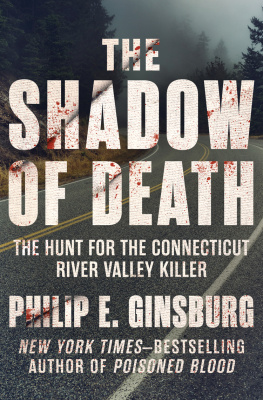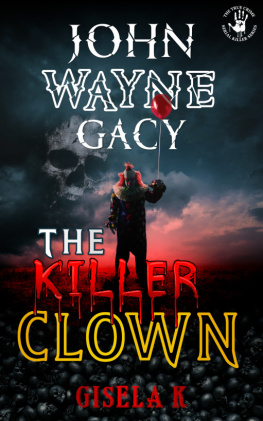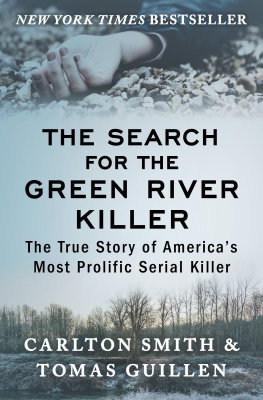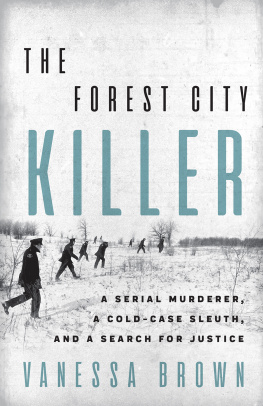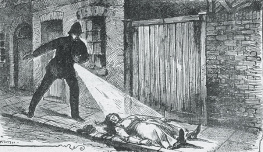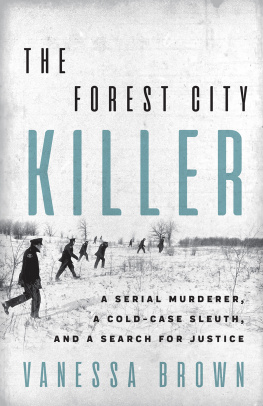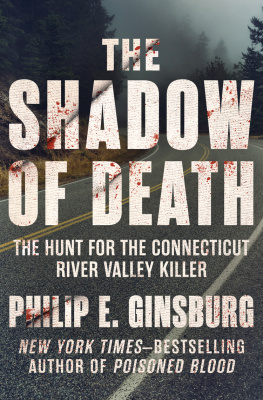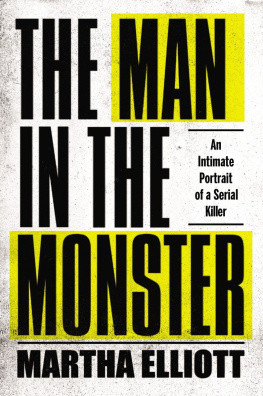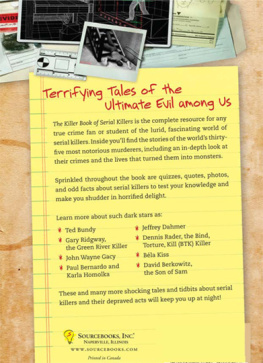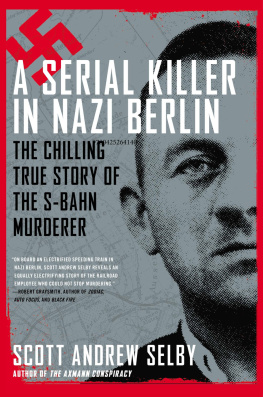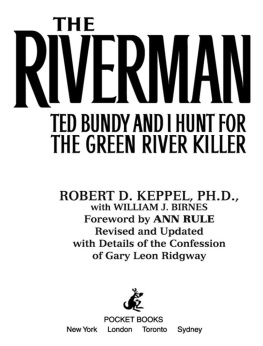


The Shadow of Death
The Hunt for the Connecticut River Valley Killer
Philip E. Ginsburg
To CA,
who waited until I was ready
and SEG,
who waited until I was almost ready.
ACKNOWLEDGMENTS
For someone who spends so much time working by himself, the writer of a book like this depends rather heavily on the help of others.
I could not have told this story in so complete and detailed a way without the help of all those people who took the time to answer my questions. Among them were Captain James Candon, Noreen Crocker, Corporal Tim Crotts, Chief Joseph Estey, Kathy Falzarano, Robert Grover, Captain Glenn E. Hall, John Halpin, Pauline LeClair, Bob Merchant of the Vermont Department of Transportation, Deborah Mozden, Jane Grey North, Janet OBrien, Mike Quinn, Pamela Rowe, Carolyn Sprague, Wayne Weiner, Lieutenant Bill Wilmot, and Sergeant Clay Young. Several people gave an extra measure of their time and attention. They included Jane Boroski, Sergeant Mike LeClair, Corporal Mike Leclaire, Stephen Moore, Sergeant Kevin OBrien, and Chief Michael Prozzo; I extend to them a special word of thanks. And there were a number of others who were willing to help but preferred to do so anonymously; I honor their wish and assure them that my thanks are no less heartfelt because of their discretion.
Among these people, named and unnamed, were some for whom helping me brought the anguish of recounting and reliving painful events. I want them to know that I understand the special generosity involved in their assistance, and I offer them a special word of thanks. I hope they will find the evidence of their sacrifice in the pages of this book, and that they will think it was worth it.
Bob Condon of the Claremont Eagle-Times was kind enough to offer assistance with the gathering of photographs, in a period when other demands on his time were especially heavy. I had professional help from Don Blades with photographs from the Rutland Herald, and other photographic help from Paul Montgomery of the Keene Sentinel, who also wrote the best of the many newspaper stories trying to make sense of the series of killings in the Connecticut Valley. I want all three of these gentlemen to know I appreciate their professional courtesy.
Two people were especially generous with their time and advice. I came to admire many of the police officers I met in New Hampshire and Vermont, and the memory of Ted LeClair will always represent for me the best qualities of such men and women. He was dedicated, compassionate, good-natured, and courageous under pressure. And he was kind without expectation of return. I will always be grateful.
John Philpin became not only a source of information but my instructor in forensic psychology and criminal profiling, far exceeding the effort any reasonably self-protective person would invest in a neophyte. In addition to expressing my everlasting gratitude, I want to make clear that any errors of fact or interpretation in the areas of my mentors expertise are solely the responsibility of the pupil, not the master.
I had two readers, RG and CA, indispensable critics who sent signals from the real world. Both were critical enough to make their compliments seem genuine, and complimentary enough to make their criticism bearable; the combination requires great wit and equal kindness. Without them it would have been considerably harder to keep on.
I know from experience with others that I was lucky to have the help of Nancy Ray with transcriptions. Once again I have also been fortunate in the publishing professionals who have offered me a hand. I continue to appreciate the help Susanne Kirk gave me in getting started, and she set a high standard as an editor. Bill Goldstein has proved a worthy successor, wise in his guidance and extraordinary in his patience, which I tested excessively without finding its limits; and in the end he gave me back a better book than I gave him. Hamilton Cain has been quick and smart with the logistical help Ive asked for. And Elizabeth Knappman, my agent, has been lavish with her enthusiasm and reliably astute in her advice. All these are blessings one can not take for granted, and I do not.
AUTHORS NOTE
The story told here is true, the actors real people, the events actual happenings, all as close to an exact recounting of the facts as I have been able to come through hundreds of hours of interviewing and many hundreds more of research.
The reader should be aware, however, that of necessity certain elements of the story have been altered. Names have been changed, along with some elements of personal description, to protect the privacy of certain individuals, and to protect the legal rights of persons who have not been formally accused of crimes. Other details of cases are either absent from this account or altered because the police withhold them as an aid to the solution of the crimes; no criminal will find here details that will help him escape detection, and no damaged soul will find authoritative particulars for a false confession.
One other form of deviation from empirical fact should be mentioned. Where the thoughts of characters are reconstructed, it is done on the basis of those characters own recollections. Where the speech of characters is quoted, it is in some cases based on contemporary accounts, like newspaper stories, diaries, and meeting notes. In other cases it may be based on the memories of the speakers and of those who heard them speak. Since recording error, fallible memory, and the mysteries of the human spirit preclude exactitude, the author begs the readers indulgence for this exercise of artistic license.

PROLOGUE
This is the story of death in a small, quiet place, of how it touched a community and the people who live there, of how they endured, and how they fought back.
We live in a time when the ways of death have multiplied, emerging in new weapons, new diseases, new impulses to horror in the human mind. The newspapers and television inform us daily that in communities all over our country, there is a new kind of murderer, one who chooses his victims without motive, strikes again and again, and often eludes capture for long periods. We learn from the media that the new way of death he brings has become a commonplace.
But that is not true everywhere. This is the story of a place where once, not so long ago, the idea of a serial killer was remote, even foreign, to the everyday lives of people. We may read and hear about these things, but that is not the same as waking up one morning to learn that they have come to our neighborhoods, our streets, our homes. That is what happened, beginning in the middle of the 1980s, to the people living in a small section of the valley of the Connecticut River in New Hampshire and Vermont.
Just a few years earlier there had been a forerunner of what was to come, a first appearance of this new thing. A killer had roamed the Valley, preying upon young girls. But like the first high winds of a great storm, his arrival could not foretell the still more terrible destruction that would follow. This first experience seemed an aberration in the quiet life of the Valley. There was no way for the people living there to anticipate that this first killer would be followed by another, one who would place them among those remote and dangerous places they had only read and heard about in the news. It is the specter of this second killer that inhabits the Valley still. The crimes he committed against individuals became crimes against all who live in the Valley.
Next page
